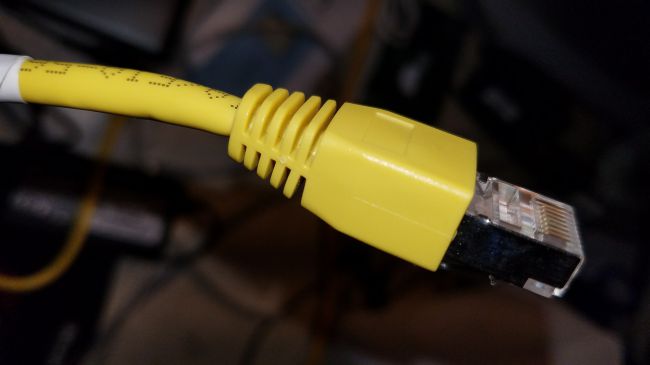IPC camera can be wired or wireless. When it is wired, it has RJ45 connector that is connected to Ethernet cable. There are many versions of Ethernet cables, and obviously the higher the number, the better.

The difference between different versions is hard to tell. Each newer generation introduces copper pairs with tighter twists and more complex sheathing.
Category 3
Cat3 cable is an earlier generation of Ethernet but can still be seen in older deployments. Cat3 supports a maximum frequency of 16 MHz. It is widely used for two-line telephone system and 10BASE-T networks. It can also be used for alarm system. However, it is not used widely for data communication network anymore.
Category 5
Cat5 Ethernet, introduced 10/100 Mbps Ethernet over distances of up to 100 meters, also known as Fast Ethernet. Even though some older deployments still use CAT5 cable, it is now considered obsolete and has since been replaced by Cat5e.
NOTE: 100 Mbps /100m.
Category 5e
E means enhanced. It greatly reduce the crosstalk noise.
Further, Cat 5e supports speeds of up to 1000 Mbps. It’s flexible enough for small space installations like residences, though it is still used in commercial spaces. Of all the current cabling options, Cat5e is your least expensive option.
Category 6
A Cat6 cable is similar to a Cat5 ethernet cable — it consists of four pairs of twisted copper wire. However, it provides you with much more functionality. A Cat6 cable has a bandwidth capacity of 250 MHz, for example, and it offers you speeds of up to 10 Gbps. It’s also compatible with both Cat5 and Cat5E cables.
Even though Cat6 and Cat6a cabling offer higher performance rates, many LANs still opt for CAT5e due to its cost-effectiveness and ability to support Gigabit speeds.
